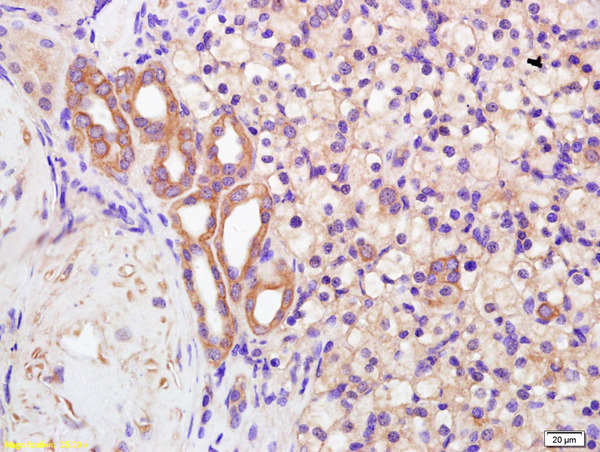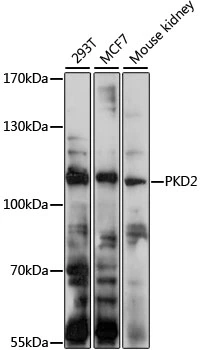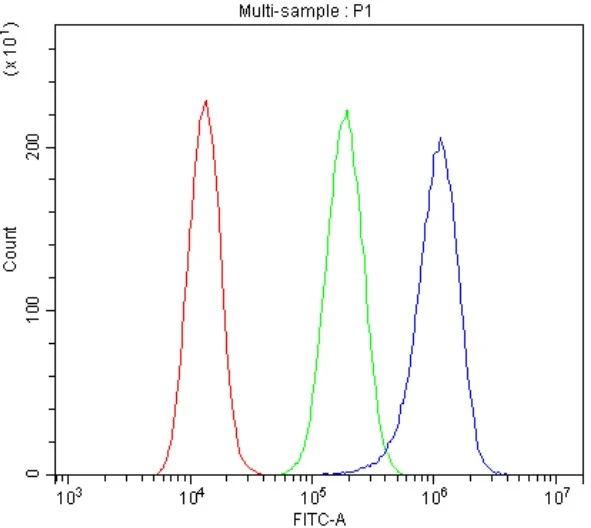Polycystin 2 antibody
GTX113802
ApplicationsWestern Blot, ImmunoHistoChemistry, ImmunoHistoChemistry Paraffin
Product group Antibodies
TargetPKD2
Overview
- SupplierGeneTex
- Product NamePolycystin 2 antibody
- Delivery Days Customer9
- Application Supplier NoteWB: 1:500-1:3000. IHC-P: 1:100-1:1000. *Optimal dilutions/concentrations should be determined by the researcher.Not tested in other applications.
- ApplicationsWestern Blot, ImmunoHistoChemistry, ImmunoHistoChemistry Paraffin
- CertificationResearch Use Only
- ClonalityPolyclonal
- Concentration1 mg/ml
- ConjugateUnconjugated
- Gene ID5311
- Target namePKD2
- Target descriptionpolycystin 2, transient receptor potential cation channel
- Target synonymsAPKD2, PC2, PKD4, Pc-2, TRPP2, polycystin-2, autosomal dominant polycystic kidney disease type II protein, polycystic kidney disease 2 (autosomal dominant), transient receptor potential cation channel subfamily P member 2
- HostRabbit
- IsotypeIgG
- Protein IDQ13563
- Protein NamePolycystin-2
- Scientific DescriptionThis gene encodes a member of the polycystin protein family. The encoded protein contains multiple transmembrane domains, and cytoplasmic N- and C-termini. The protein may be an integral membrane protein involved in cell-cell/matrix interactions. The encoded protein may function in renal tubular development, morphology, and function, and may modulate intracellular calcium homoeostasis and other signal transduction pathways. This protein interacts with polycystin 1 to produce cation-permeable currents. Mutations in this gene have been associated with autosomal dominant polycystic kidney disease. [provided by RefSeq]
- Storage Instruction-20°C or -80°C,2°C to 8°C
- UNSPSC12352203
References
- Oliveira I, Jacinto R, Pestana S, et al. Zebrafish Model as a Screen to Prevent Cyst Inflation in Autosomal Dominant Polycystic Kidney Disease. Int J Mol Sci. 2021,22(16). doi: 10.3390/ijms22169013Read this paper
- Roxo-Rosa M, Jacinto R, Sampaio P, et al. The zebrafish Kupffer's vesicle as a model system for the molecular mechanisms by which the lack of Polycystin-2 leads to stimulation of CFTR. Biol Open. 2015,4(11):1356-66. doi: 10.1242/bio.014076Read this paper








